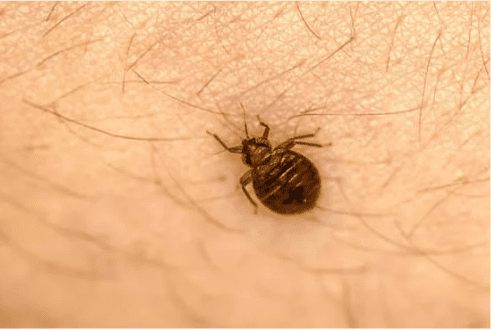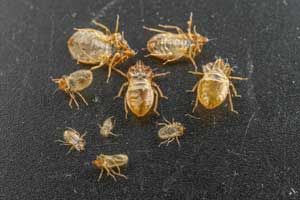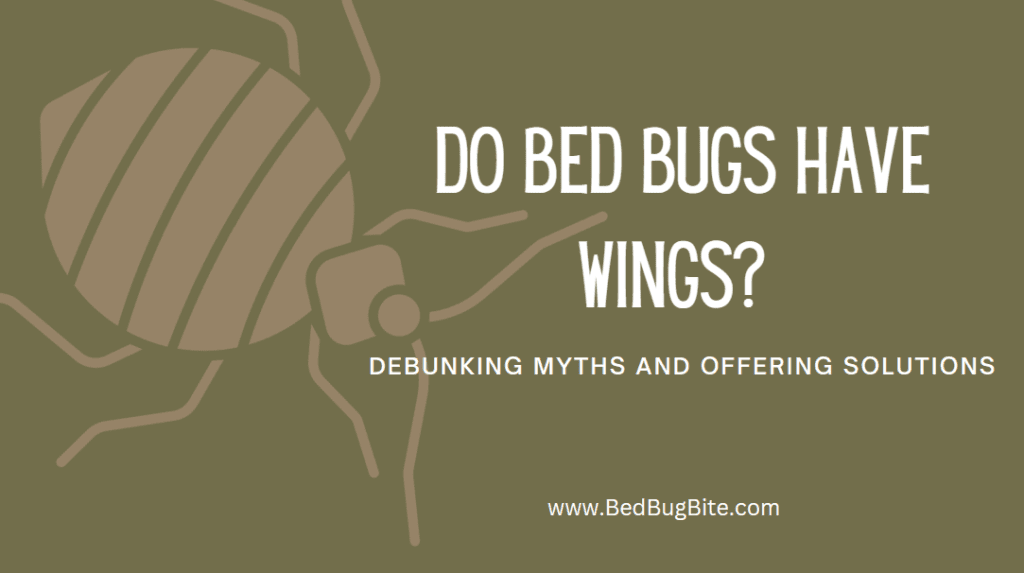Introduction: Bed Bugs in Our Homes
Every homeowner’s nightmare, the infamous bed bug, has crept its way into popular discourse for good reason. These tiny pests, often no larger than an apple seed, have an uncanny ability to disrupt our peace and comfort. But beyond the itchy bites and nighttime terror, what do we genuinely know about these creatures? Understanding the bed bug’s anatomy and behavior not only helps dispel myths and misconceptions but also empowers us to tackle an infestation more effectively. Do Bed Bugs Have Wings? Debunking Myths and Offering Solutions
In this guide, we’ll delve deep into one of the most common questions that has intrigued many: Do bed bugs have wings? So, whether you’re battling an infestation or merely curious, our analysis promises clarity, answers, and actionable insights. Buckle up and let’s demystify the world of bed bugs.
Bed Bug Basics: A Closer Look at Their Anatomy

When we picture a bed bug, the image that often springs to mind is of a minuscule, brown bug. However, there’s much more to their anatomy than meets the naked eye. The average bed bug is about the size of a face on a coin, ranging from 4 to 5 mm in length. Its oval, flattened body is designed for stealth, allowing it to navigate through tight spaces like mattress seams and furniture crevices with ease.
The color can vary, but mature bugs are typically a deep mahogany, sometimes appearing redder after a blood meal. But, perhaps the most intriguing part of their physique is the presence of wing-like structures. Do Bed Bugs Have Wings? What’s their purpose? And does it mean these pests can fly? Stay with us as we dissect these questions and more, giving you a complete understanding of these nighttime terrors.
Do Bed Bugs Have Wings? Busting the Myth
One of the most perplexing inquiries regarding bed bugs centers around their supposed ability to fly. So, let’s set the record straight: bed bugs do not have functional wings. While they do possess wing pads, often mistaken for actual wings, these are vestigial structures. In simpler terms, they’re remnants from their evolutionary past and serve no present-day purpose in aiding their mobility.
The confusion is understandable, given that many insects, including some that share habitats with bed bugs, flaunt prominent wings. To further distinguish bed bugs from other winged critters, it’s essential to remember their primary mode of movement: crawling.
Source: Bed Bugs Appearance and Life Cycle | US EPA
Reasons for the Misconception
As with many urban legends, the tale of the flying bed bug is rooted in a mixture of half-truths and misidentifications. A primary culprit behind this misconception is the bed bug nymph. These younger counterparts, lighter in color and sometimes translucent, can be mistaken for other tiny, winged insects when viewed by the untrained eye.

Further blurring the lines are the bed bug’s distant relatives, like certain species of beetles or small cockroaches, which possess wings and can fly. These similarities, albeit superficial, have fueled the myth, leading to undue panic and misdirected extermination efforts. By distinguishing bed bugs from other insects, homeowners can strategize more effective and targeted pest control measures.
How Do Bed Bugs Move If Not by Flying?
While the idea of flying bed bugs is a falsity, their ability to spread quickly is very real and primarily achieved by crawling. These pests are adept travelers, hitching rides on luggage, clothing, and even second-hand furniture. Their flat bodies are tailor-made for squeezing into tight spaces, ensuring they stay concealed during the day, only to emerge at night in search of a blood meal. Unlike other pests that rely on flight, bed bugs depend on their proximity to human hosts. It’s this sneaky, ground-level mobility, coupled with their rapid reproduction rate, that makes bed bug infestations so challenging to tackle. Understanding their movement patterns is the first step in keeping these pests at bay.
Combatting a Bed Bug Infestation: Proven Methods
The presence of bed bugs in one’s living space can be an unsettling experience, but there’s a silver lining: they can be defeated. Armed with the right knowledge, homeowners can embark on a successful eradication journey. To start, preventive measures play a pivotal role. Regularly inspecting your home, especially after vacations or travel, can help spot early signs of infestation.
Using protective covers on mattresses and avoiding second-hand furniture are other effective strategies. If you do discover these uninvited guests, don’t panic. Choose between professional extermination services, which offer comprehensive solutions, and DIY methods, which can be cost-effective but require diligence. All natural sprays, Essential oils, heat treatments, and vacuuming are some popular home remedies. However, for larger infestations, seeking expert help can ensure a thorough, long-term solution. Remember, it’s not just about getting rid of bed bugs; it’s about preventing their return.
Frequently Asked Questions: Bed Bugs Uncovered
As we journey deeper into the world of bed bugs, numerous questions naturally arise. Addressing these common queries not only alleviates concerns but also equips homeowners with vital knowledge. Let’s tackle some of the most frequently posed questions:
- Do bed bugs jump?
- Contrary to some beliefs, bed bugs cannot jump. Unlike fleas, their primary mode of movement is crawling. Their flat bodies enable them to navigate tight spaces, but hopping or jumping isn’t within their skill set.
- How fast do bed bugs reproduce?
- Alarmingly fast. A female bed bug can lay hundreds of eggs in her lifetime, with each egg maturing in just a matter of weeks. This rapid reproduction rate underlines the importance of timely intervention once an infestation is detected.
- Can bed bugs infest other areas besides the bed?
- Absolutely. While they prefer the proximity of a bed due to easy access to their human hosts, bed bugs can be found in sofas, carpet edges, wall cracks, and even electronic appliances. Regular inspections throughout the home are crucial.
By addressing these prevalent concerns, we aim to arm every homeowner with the knowledge they need to confidently confront and control potential infestations.
Equipped with Knowledge, Ready for Action
The world of bed bugs, often clouded in myths and exaggerations, can be intimidating for many. However, as we’ve gone through the details of their anatomy, debunked misconceptions, and explored effective eradication techniques, one thing becomes abundantly clear: understanding bed bugs is our most potent weapon against these infestations.
Understanding bed bugs is not just an academic exercise; it’s the foundation for proactive and reactive measures in ensuring our homes remain pest-free. Loaded with this comprehensive insight, homeowners are better positioned to tackle any potential infestations head-on.
Remember, the fight against bed bugs is not a solitary one. By sharing this knowledge and staying vigilant, we can create environments where these pests don’t stand a chance. Here’s to informed actions and peaceful nights, free from unwelcome nocturnal guests.




